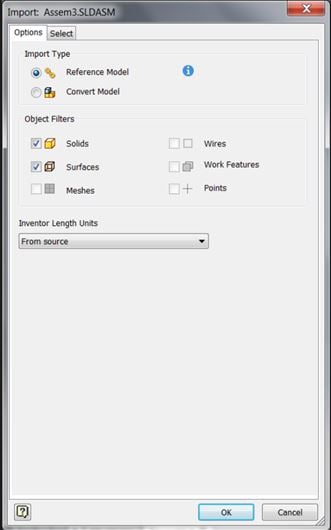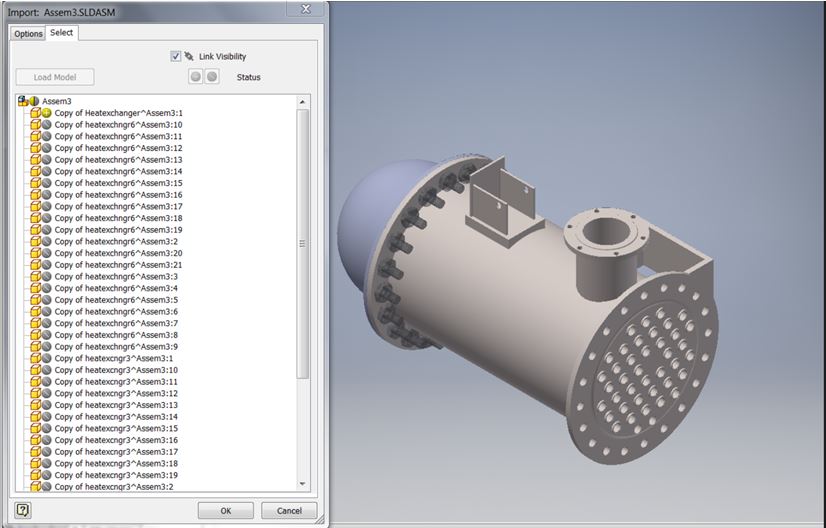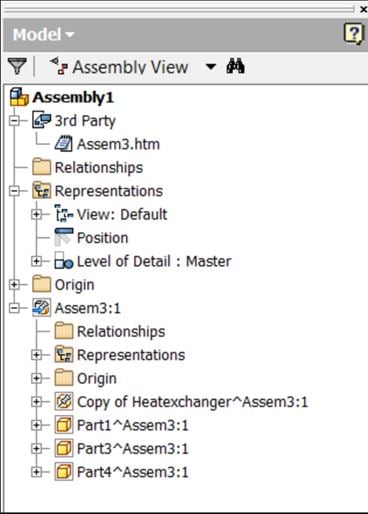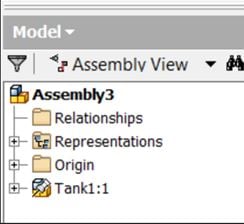AnyCAD is new core functionality within Inventor® 2016. Rather than simply translate competitor data into Inventor, AnyCAD allows users to create an associated link to the files. This means that if the components in question are changed, these changes take place within the Inventor space immediately, without the need for re-translation.
When a SolidWorks model is selected to open, for example, the import dialog has the legacy option to convert the data, as well as the new option to reference the file.

If Reference Model is chosen, the Select tab allows users to load the model, as well as select which parts and sub structure are needed. This interface is similar to the copy or mirror components or the derive command, in which the yellow symbol signifies “include”, and the grey means “exclude”.

In this example, the model has been loaded and the fasteners were removed. This function allows users to focus on what is most important in their design process.
Once the configuration is complete, the model will then load into the session. In this example, an SLDASM file was used, and is inserted into a new assembly file as a sub assembly. Each part of that design can have its visibility toggled on or off, as well as be disabled. Users will also receive the same translation report that is used for the legacy conversion steps.

If the documents used for reference are changed within their 3rd party CAD software, once saved, an update notice would be received. Much like a standard assembly would function, on update the referenced model updates within Inventor and any changes are reflected.
A couple of general notes about this process: If the models are drastically changed, things like constraints, adaptivity, and other Inventor references might break. This is the same process a user would experience making drastic changes to a design.
Next, users have the ability to suppress the link to the 3rd party files. This is similar to how a derived assembly works. If the files need to be changed within Inventor, users can also completely break the link to the original 3rd party documents, which will in turn, require them to define the naming convention and save location for the components.
If the user’s need to replace the designs, and each revision is a new design, the process is rather straight forward. Simply open the design and create the referenced linked file, which will be placed within the confines of a new assembly document. Instead of adding additional files within that design, place that assembly into a new assembly.

In this example, the imported files were saved as Tank.iam. Tank.iam was then inserted into a new assembly.
Once the subassemblies are inserted, the standard Component>Replace command opens up and becomes available. Lastly, just like other references that are put in place, if the 3rd Party CAD files become renamed, moved or deleted, the resolve link will appear.
These tools streamline the entire translation/importation process greatly. They allow users to focus on the task at hand, rather than wasting time whittling away at imported models only to have to repeat the process over again if a revision takes place. Also compelling is the fact that Autodesk could have charged for the ability to import these models in this fashion, much like their competitors, but didn’t. In fact, they included it in their base-level software.



Comments